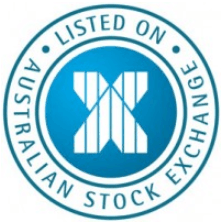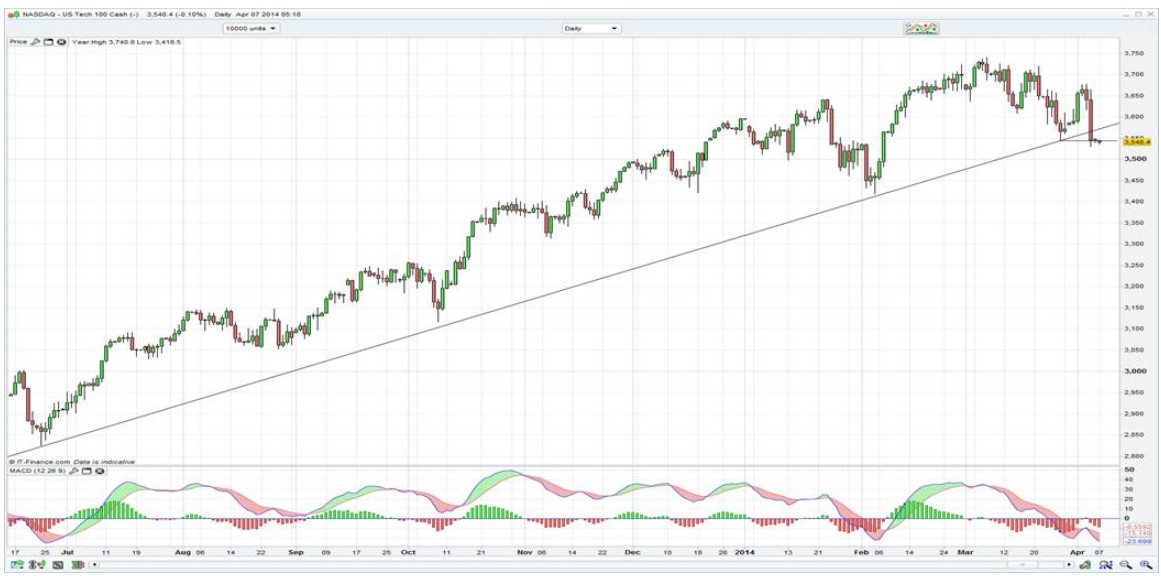
Chris Weston, Chief Market Strategist at IG Markets
The US payrolls report was a straightforward exercise in market positioning, pure and simply. Understand market positioning and those brave enough to trade around news will greatly put the odds in their favour.
Overall the US jobs report was good, with revisions higher to the prior months and a household survey that showed huge improvement. The big negative was the miss to hourly earnings, so generally the inflationary aspects of the release were poor and this was a key factor in the strong bid in US treasuries, gold and modest selling in the USD. When the dust clears, what the report has confirmed though is that the US recovery is back on track and the script of tapering $10 billion a month is still assured.
Perhaps the key equity story now is the horrible price action in the momentum/growth stocks; especially ones that trade (or at least did trade) on outrageous valuations. Anyone who has been watching price action on Twitter, Facebook, Tesla and Amazon, among others, would not see this as a particularly new story, as they are all in or around bear market territory. However, it’s now time for the index to play catch up and the NASDAQ (quotes as US Tech 100 Cash with IG) has now broken and closed below the 100-day moving and June 2013 uptrend. Short positions are clearly favoured now, although the hourly chart is grossly oversold.
The S&P 500 didn’t fall as hard as the NASDAQ as the make-up of the index is different, but price action is also bearish, having printed a key day reversal at the trend high. There seems to be some rotation out of any names which have effectively been labelled a ‘bubble’ over the last six months or so and there seems to be some money being re-positioned into names which have been returning cash to shareholders. Expect similar price action in Europe on open.
(Daily chart of the NASDAQ)
It’s interesting to see these issues spill over into Asia and while tech and social media names across Asia have been sold off fairly aggressively, there is concern that any stock trading on a very high multiple is ready to be savaged. In Australia the likes of RealEstate.com, TPG and SEEK have been sold off, but they are quality businesses and while they deserve a pullback to realistic multiples, they should find willing buyers at better levels. Then we have businesses like Xro and Freelancer which are still trading on huge valuations, with the former still up 440% from last March and not expected to make earnings until 2017.
Time to get into emerging markets?
While developed markets seem to struggle, another key talking point is whether it’s time to get serious about emerging markets again. The outflows from emerging markets have been a one-way trend for so long, and while this still seems a contrarian idea for many, there have been much better flows into currencies such as the Brazilian real, Mexican peso, Turkish lira and Russian ruble on Friday and today. The carry trade is working once again and while this strategy comes and goes, with the falls in US yields (and fed funds futures) traders looked to pick up yield and subsequently carry. This is another reason why the AUD remains well bid.
Locally, China has been closed, while we’ve seen selling in Japanese and Australian markets. Data has been limited today, with ANZ jobs ad’s turning up a touch ahead of this Thursday’s employment report. If ANZ jobs are a leading indicator then this is encouraging stuff and is being taken today in earnest by the rate hike bulls. AUD/USD bulls will be hoping for a break of the 93 handle, where strong offers seem to be prevalent.
While the talk on the floors has mostly centred on price action in high valuation equities and whether it’s time to get back into emerging market assets (with valuations in some cases half that of developed markets) , it’s worth pointing out the further developments in one of key themes – growing central bank divergence.
Talk of ECB QE
The talk on Friday was around an article in a German publication that the ECB were modelling a one trillion euro QE program, aimed at boosting inflation between 20 and 80 basis points. This was later denied, but one can’t help but think this was strategically designed to cement the belief that the ECB are serious about fighting deflation. Still the probability is we have seen the low point in European inflation and they may never have to buy any assets, which would be the typical Draghi way, with the OMT (Outright Monetary Transaction) being hugely successful without ever having to be used. This should keep the EUR from rallying too high. ECB members Yves Mersch and Vitor Constancio are due to speak, with Mr Constancio’s comments likely to be of key interest given he was the individual who denied that the ECB were modelling a QE program.
As well as talk from the ECB, it’s worth highlighting the BoJ are now firmly expected to ease again and this may be reflected in the 28% increase in JPY shorts last week. In a Bloomberg survey today 72% said extra easing would materialise before or during July. Can hold then USD/JPY should move back to the high 103’s this week.
